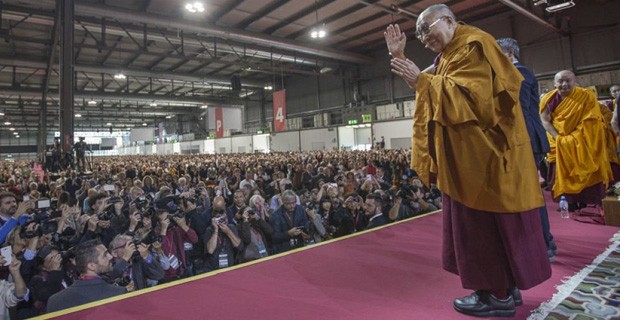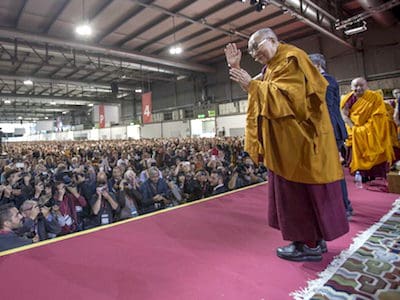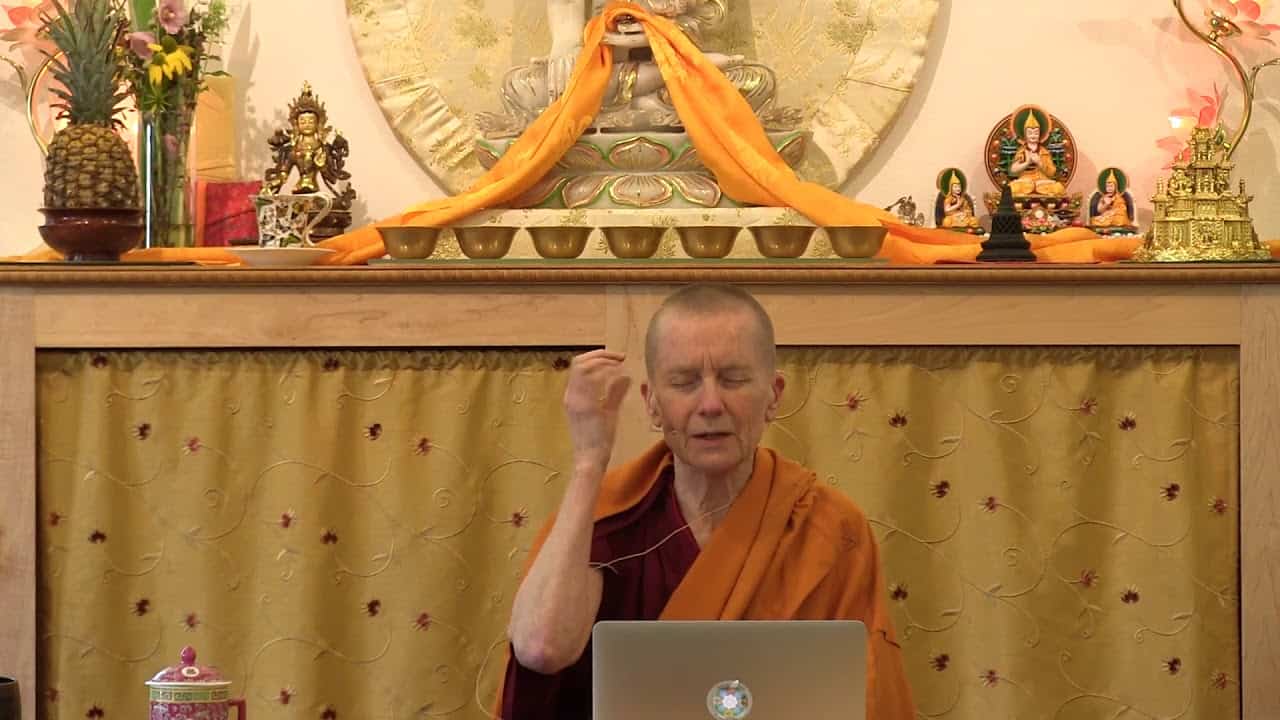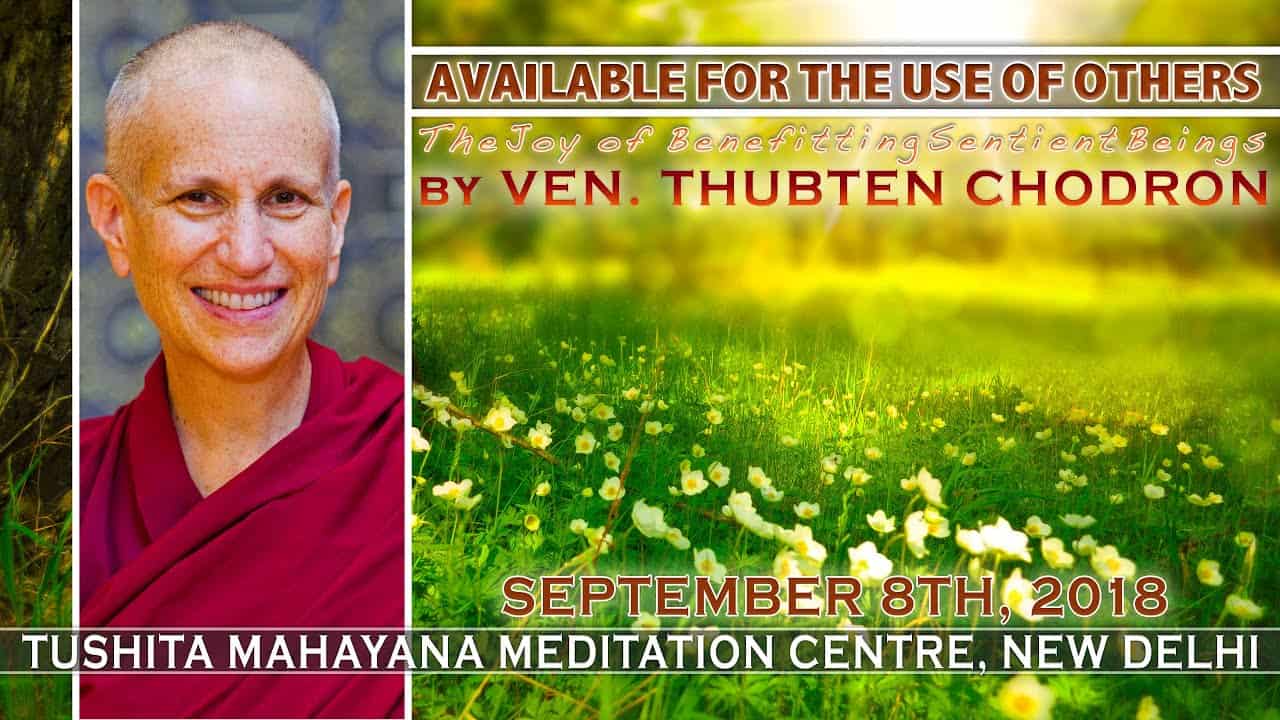Social action and interfaith dialogue

As eclectic as our society is today, we may easily become insulated in our own comfortable groove. The meditation on equanimity enables us to begin to dissolve attachment towards friends and relatives, hostility towards people who push our buttons, and apathy towards all those we don’t know. This meditation stretches our boundaries, helps us to include others in the field of our love and compassion, and enables us to learn so much more from others. Once our attitude has begun to shift, the next step is to live that in our actions. Among all the various forms of outreach, I would like to discuss two: aiding those in need and interfaith dialogue.

His Holiness the Dalai Lama (Photo by Tenzin Choejor)
His Holiness the Dalai Lama, speaking about what Christianity and Buddhism could learn from each other, has said, that while Christians can learn techniques for meditation and concentration from Buddhists, Buddhists should learn about actively reaching out and helping others from Christians. He went on to praise Christians setting up schools, hospitals, homeless shelters, and halfway houses and encouraged Buddhists to do the same.
Sitting in the audience, I felt happy to hear him say this, as I had noticed a dearth of socially engaged Buddhists. Most people have a hard enough time getting to the meditation cushion to contemplate love and compassion, and once they do, perhaps they feel that is sufficient, or all they have time for. But one purpose of doing meditation is to bring what we gain in silent practice into our daily lives in a way that benefits others. Of course, we try to do this with our colleagues, family members, and friends, but it’s also important that we reach out and enable strangers to benefit from our meditation practice as well.
For this reason, it’s beneficial for Dharma centers, temples, and abbeys to become active in social outreach projects. The specific project may vary; some possibilities are feeding homeless teens, sending Dharma books to prisoners, engaging in hospice work, helping the Tibetan nuns, and speaking at schools and other public forums when invited. Such activities benefit ourselves and others and are part of our Dharma practice.
In terms of the second form of outreach, interfaith dialogue stretches us beyond our usual limits. Here we learn about other faiths and share the essence of spiritual practice with others. This helps us overcome any prejudice we may have and to form close bonds with those of other faiths. The exchange stimulates the participants own spiritual practice and gives us new ideas to consider. Interfaith dialogues should not simply be polite exchanges. Although it may take time to build trust and open communication, continuing to deepen the dialogue can lead to a great sharing of experience.
To combine the above two forms of outreach, I encourage people to practice what Sol Gordon, a psychologist, friend, and Jewish writer, suggests. When people suffer from low self-esteem or depression, he recommends “mitzvah therapy.” Mitzvah is the Jewish word for good deed, and he tells people to go out and help others as a remedy to their own problems. Curiously, this is what His Holiness the Dalai Lama also recommends when he teaches that compassion is an antidote to low self-esteem and self-hatred. Actively engaging with others in a beneficial way through social welfare projects, dialogues, and so forth, is medicine for all concerned because it pulls us out of unhealthy self-preoccupation and enables us to experience the universality of everyone’s wish to avoid pain and to be happy.
Venerable Thubten Chodron
Venerable Chodron emphasizes the practical application of Buddha’s teachings in our daily lives and is especially skilled at explaining them in ways easily understood and practiced by Westerners. She is well known for her warm, humorous, and lucid teachings. She was ordained as a Buddhist nun in 1977 by Kyabje Ling Rinpoche in Dharamsala, India, and in 1986 she received bhikshuni (full) ordination in Taiwan. Read her full bio.


